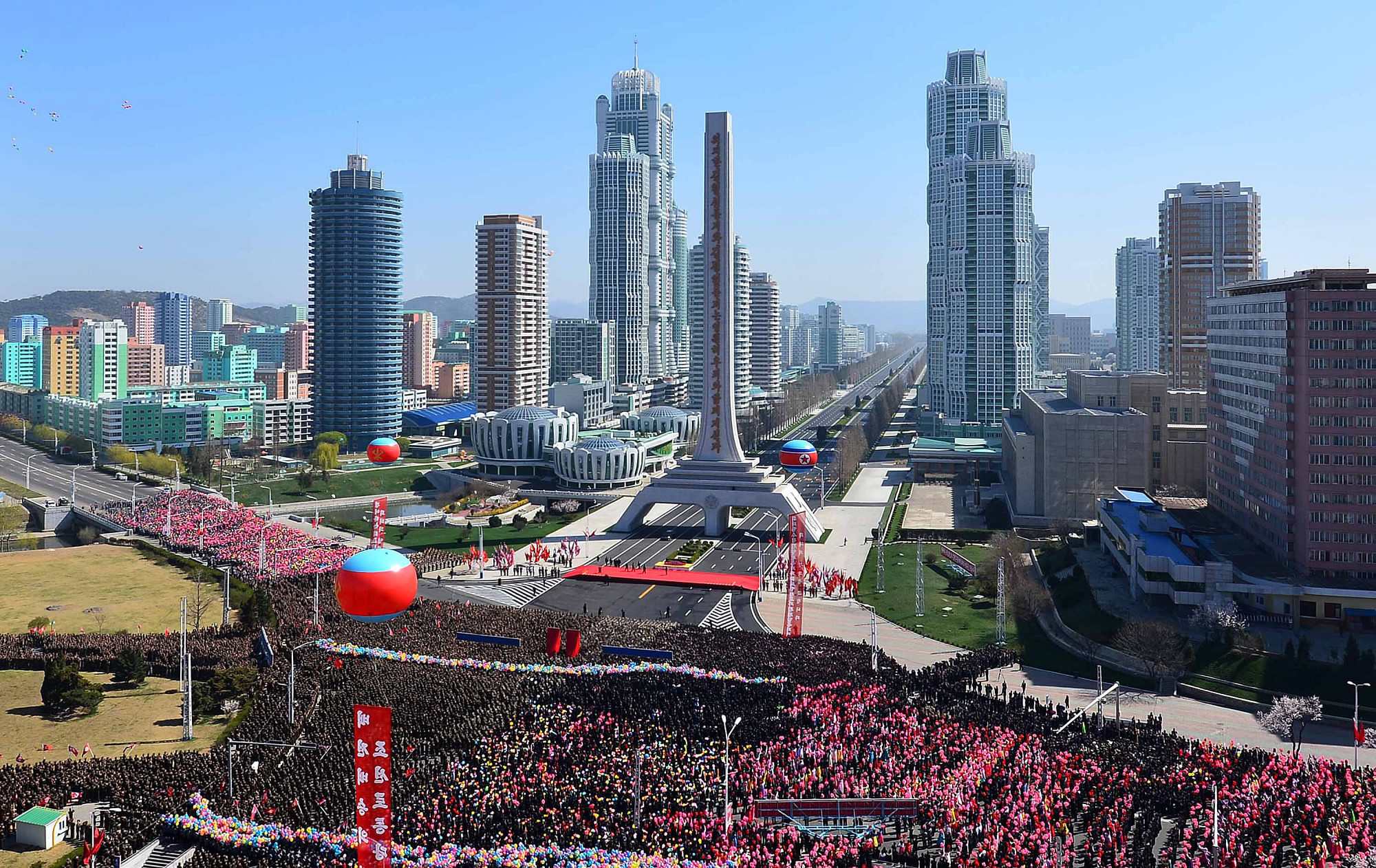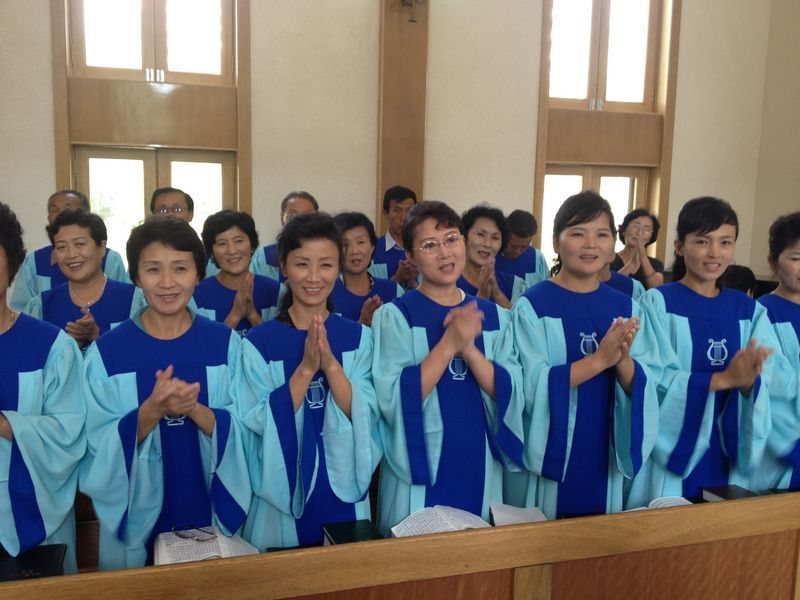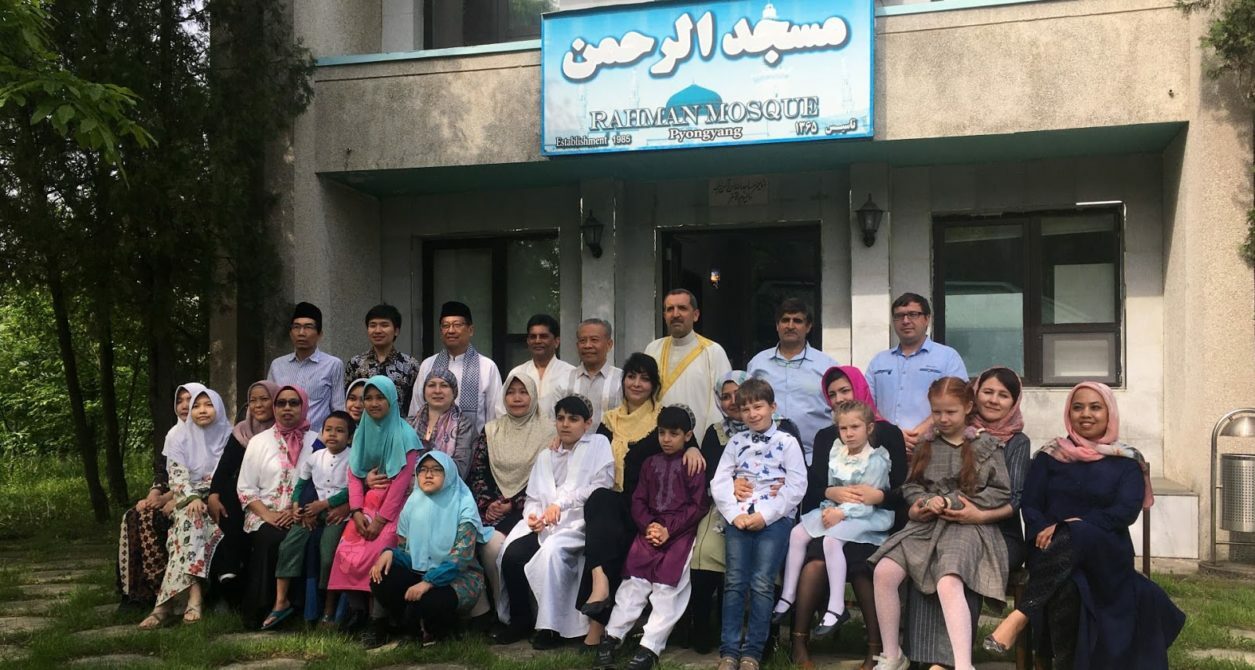More languages
More actions

Pyongyang (Korean: 평양시; Hanja: 平壤市) is the capital of the Democratic People's Republic of Korea. Pyongyang is located on the Taedong River about 109 km (68 mi) upstream from its mouth on the Yellow Sea. Pyongyang is a directly administered city with equal status to the provinces of DPRK.
Pyongyang is one of the oldest cities in Korea.[1]
There are many prominent landmarks in Pyongyang, such as Juche Tower, Kim Il Sung Square, the Chollima statue, the Workers' Party of Korea founding monument, Pyongyang's Arch of Triumph, the Mansu Hill Grand Monument, and the Kumsusan Palace of the Sun. The Ryugyong Hotel, known for its pyramid shape, is also found in Pyongyang. In addition there are several institutions in Pyongyang, such as the Grand People's Study House, the Kim Hyong Jik University of Education, and Kim Il Sung University, as well as attractions such as Moranbong Park, Munsu Water Park, the Central Botanical Gardens, and the Central Zoo.[2]
History
The ancient capital of the legendary Dangun dynasty (2333 BCE) was located on the site where, according to legend, the modern city of Pyongyang was founded in 1122 BCE.[1] Pyongyang has been the capital of two ancient Korean kingdoms, Gojoseon and Goguryeo, and served as the secondary capital of Goryeo.
Korean War
Pyongyang was devastated during the Korean War, during the sustained aerial bombing by the United States of America. By the time of the armistice, an estimated 75 percent of Pyongyang's area was destroyed by the bombing campaign, which was part of a broader U.S. bombing effort throughout the country, in which conventional explosives, incendiary bombs, and napalm destroyed nearly all of the country's cities and towns.
Educational institutions
Religious facilities
There are multiple religious facilities in Pyongyang serving different faiths as well as some being preserved historical sites. Some are recently built while others were built before the war (many of them having to be re-built after the war's devastation). Some facilities cater mainly to Pyongyang's expat communities, while others serve the local community as well as visitors, while others are oriented toward preserving sites of historical or cultural interest. Christian churches include the Protestant Bongsu, Chilgol and Jeil churches, as well as the Catholic Jangchung Cathedral, and the Orthodox Holy Trinity Russian Church.[3] The Ar-Rahman Mosque serves the Muslim community of Pyongyang.[4] Pyongyang also has Kwangbop Temple, a Buddhist temple that was re-built after the destruction of the war. Today, the temple is managed as a national heritage site according to the national heritage protection policy of the Workers' Party of Korea.[5]
Previously, Pyongyang had so many churches that it was sometimes known as the "Jerusalem of the East". These churches, like nearly everything else in Pyongyang, were annihilated in the Korean War carpet bombing campaigns perpetrated by the USA.[6] In the 2014 documentary People Are The Sky, a member of the congregation at Bongsu Church in Pyongyang spoke about her experience during the U.S. carpet bombing of the DPRK and its impact on the Christian community who suffered from the U.S. attacks:
There were many churches on Pyongyang. Actually, because there were so many churches, we called it the second Jerusalem. [...] After we were liberated, the People's Government was established. A lot of churches were born freely. After that we lived in peace. We were able to live in peace for the next five years. [Until the war broke out.] I believe those five years were our golden age. We attended church every week after school. But soon there was no church left because of the heavy bombing. Even during the worship service, the bombing killed a lot of people. When I think of that time, even now tears gather in my eyes. So many of my friends died. Then we heard that the U.S. was planning to drop the atomic bomb. We were threatened that we would all die and must go south. Because of that threat, a lot of my people headed south. Americans shot those people and killed them. So they killed, largely by bombing but also by shooting. They bombed us even during worship service. No churches were left in Pyongyang! Before the war, we thought Americans were angels from God, but after the war, we hated them.[7]
Churches

Chilgol Church is one of the oldest and most important protestant churches in Pyongyang, located on Liberation Street,[8] originally founded and built in 1899. In June 1950, the church was levelled during the war. Following the war, in 1989 it was rebuilt to fit the original style of the building. The church welcomes foreign residents, tourists, and local devotees alike. Officially there is a congregation of about 150 people that regularly attend services at the church. President Kim Il Sung's mother was also a patron of Chilgol Church.[9] Chilgol Church is in Mangyongdae District, on the west side of Pyongyang City. Just off the massive Kwangbok Street and very close to the Xiangmanlou Chinese Restaurant and the Youth Hotel.[10]
Bongsu Church, also spelt Pongsu Church this is the largest church in Pyongyang. It was built and opened in 1988. Later, Bongsu Church was relocated, expanded, and rebuilt in 2008, with money donated from South Korean religious groups. It is open on Sundays, tourists are able to visit, all services are in Korean only, although Korean-English Bibles are available. Bongsu Church is located in the western part of Pyongyang, on a hillside above the Potong River and across from the Potong River Improvement Monument.[6]
The Jangchung Catholic Church was built in Songyo District, Pyongyang in March 1988 by devout Catholic believers. It covers an area of 2000 square metres and has a seating capacity of about 200.[11]
The Russian Orthodox church in Pyongyang was built in 2006. The church mostly serves the Russian expat community in Pyongyang. The decision to build the first Orthodox Church in the DPRK was made personally by Kim Jong Il on August 22, 2002, after his visit to the Church of St. Innocent Innokentiy of Irkutsk in Khabarovsk. In 2003, the Russian Orthodox Church accepted four students from DPRK to study at the Moscow Ecclesiastical Seminary (MES). The Church was built by Korean workers in two years at the expense of the DPRK budget. Bells, icons and church utensils were donated by the Russian Orthodox Church, and employees of the Russian Embassy to the DPRK helped in the construction of the church as well. Regular services at the Trinity Church are held every Saturday (the Night Service) and every Sunday (the Divine Liturgy).[12][3]

Ar-Rahman Mosque
Ar-Rahman Mosque serves the Muslim community of Pyongyang and is located on the grounds of the Iranian embassy, where expats of various countries can come to participate in the religious services.[4]
Kwangbop Buddhist Temple
Kwangbop Temple (Korean: 광법사) is a Buddhist temple that was destroyed by the US air raids during the war and later restored. Visiting the temple site in 1989, President Kim Il-sung gave an instruction on restoring the temple to its original state.[13] It was eventually restored in 1990.[14][15] Today, Kwangbop Temple is preserved and managed as a national heritage site according to the national heritage protection policy (Korean: 민족유산보호정책) of the Workers' Party of Korea.[5]
References
- ↑ 1.0 1.1 “P’yŏngyang | National Capital, North Korea” Encyclopædia Britannica.
- ↑ “North Korea Travel Guide | Pyongyang Sights and Tourist Attractions.” 2017. Tongil Tours. June 23, 2017. Archived 2023-03-14.
- ↑ 3.0 3.1 Dennison, Tariq. 2014. “Russian Orthodox Church in Pyongyang, North Korea (DPRK).” YouTube Video. Archived 2023-03-23.
- ↑ 4.0 4.1 Parker, Jaka. 2017. “Eid Al-Fitr in North Korea | Muslim in North Korea.” YouTube Video. Archived 2022-10-07.
- ↑ 5.0 5.1 “광법사.” May 15, 2022. DPRK Today. Archive.
- ↑ 6.0 6.1 “Bongsu Church | North Korea Travel Guide - Koryo Tours.” Koryogroup.com. May 4, 2020. Archived.
- ↑ Extremely Rare DPRK videos. “North Korean Christian Woman Tells What Happened to Christians in North Korea.” YouTube Video. Clip from Dai Sil Kim-Gibson's “People Are the Sky” (2014). Archived 2023-03-23.
- ↑ “Can You Go to Church in North Korea?” Young Pioneer Tours. January 24, 2019. Archived 2022-09-22.
- ↑ “Chilgol Church Pyongyang.” Young Pioneer Tours. April 24, 2020. Archived 2023-03-23.
- ↑ “Chilgol Church | North Korea Travel Guide - Koryo Tours.” May 4, 2020.
- ↑ “Jangchung Catholic Church in the DPRK.” 2013. KFAUSA.org. December 5, 2013. Archived 2023-03-23.
- ↑ "Orthodox Church of the Live-Giving Trinity in Pyongyang." Embassy of Russia to the DPRK. Archived 2023-03-23.
- ↑ “Kwangbop Temple.” DPRK Today. Archived 2023-03-23.
- ↑ “Exclusive Buddhist Temple Tour of North Korea | Uri Tours.” Uri Tours. October 21, 2013. Archived 2023-03-23.
- ↑ NatalieRevolts, DefendKorea. 2021. “Kwangbop Temple [DPRK Spotlight].” YouTube Video. Archived 2023-03-23.
